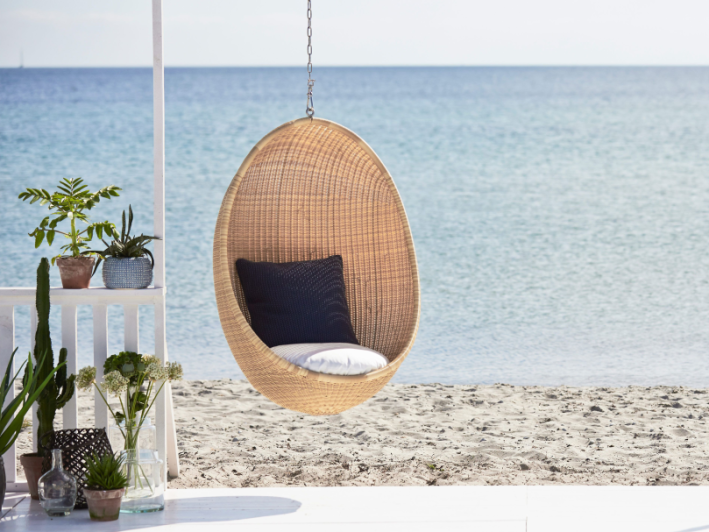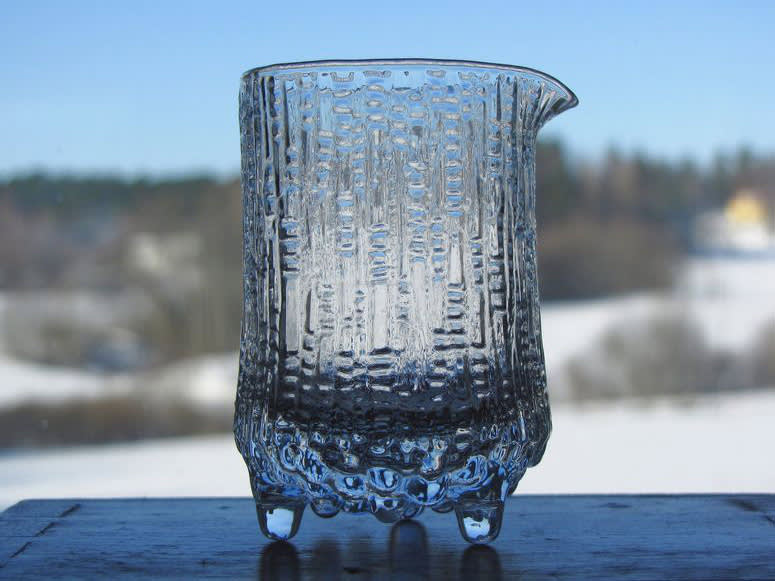What is Scandinavian design and why do we love it?
From 'Hygge' to Scandi: Nordic design is an ever trending aesthetic, not just since IKEA made it affordable to everyone. With its main characteristics, Scandinavian style conveys calmness and coziness in an instant. Read why it is so much more than a neutral, sandy colors.

Neutral colors, natural materials, quality craftmanship: Danish iF DESIGN AWARD Gold Winner Bang & Olufsen is a master of Scandinavian design.
Simple, beautiful, and functional, Nordic design has something for everyone. From Alvar Aalto’s ‘rational and intuitive’ architecture to the ‘deliberately restrained and elegant’ furniture of Finn Juhl, to our favorite drinking glasses by Iittala or premium sound systems by Danish Bang & Olufsen.
When we talk about Nordic design, we are simplifying things, of course. Denmark, Finland, Iceland, Norway and Sweden all have their own design traditions and unique characteristics, from the formalism of mid-century Danish furniture to the technical mastery of Finnish glassware. Still, there are historical, cultural, and climatic commonalities. If Scandinavian design is the reflection of the shared sensibilities, natural environments and histories of these beautiful countries, then what great design in the Scandinavian tradition has in common is that it is democratic, elegant, and built to last.
There are even certain characteristics, everybody around the globe simply combines with the so-called 'Scandi-Style', especially when it comes to interior: Natural materials, neutral colors, clean lines, funcionality and above all, as said: quality craftmanship.
Until very recently, Scandinavia was isolated from Europe. These large countries with small populations faced long winters that made travel or transport to the rest of Europe dependent upon season and weather. Everything people needed to survive and prosper had to be produced by local artisans. This craft tradition and the associated respect for well-made goods infused Nordic societies with a belief that good design is a basic right rather than a luxury, available to (almost) everyone. Well-made, simple yet beautiful design objects are not only for the wealth, rather they are part of everyday life.

The Raadvad Opener by Jens Quistgaard
Take the Raadvad can opener, designed by Jens Quistgaard in 1950. In some ways, this is the quintessential Nordic design: beautiful, simple, long-lasting – and affordable. Practically every home in Scandinavia has one or more of these openers in the kitchen drawer. They are nearly indestructible.

Tripp Trapp by Stokke, design by Peter Opsvik
One of the most enduring Norwegian designs is undoubtedly the Tripp Trapp chair by Peter Opsvik, manufactured by Stokke. This simple yet ingenious design enables young children to sit up high at the table, eye to eye with the grown-ups. A design classic that is every bit as relevant today as it was 50 years ago when it was designed!
Scandinavian Design is elegant
Whether it is the skillful use of natural materials or the lack of ornamentation, Scandivian design is considered the epitome of reduced, elegant design. In the fine sculptural quality of mid-century Danish furniture design like the chairs of Hans Wegner or the astounding details of Oiva Toikka’s glass birds, we see craftsmanship taken to the highest level.
Nordic Design is timeless: Marimekko
If these classics of mid-century Scandinavian design were people, they would all have reached retirement a decade ago. No question, they have aged well: an original Egg Chair is a highly desireable collector’s item, and the prints that Vuokko Eskolin-Nurmesniemi designed in 1954 for Marimekko are still selling after 60 years. Oversized and non-constricting, in bold colors and patterns, Vuokko’s clothing for women and men were so far ahead of their time they are still relevant over half a century later. Just like one of the newest collaborations with another nordic design icon show: With BASTUA, there is currently a stunning Marimekko collection at IKEA (picture on the left) with bathrobes, cushions, vases or bags. Two icons of nordic design joining forces.


Scandinavian architecture: Balance of light and clean lines
Modern Scandinavian architecture arose out of a strong vernacular building tradition – meaning people designing and building their own houses – and is marked by the clever use of natural light (very important during the long Nordic winters!), functional clean lines, and a site-specific design. You might also say that Nordic architects are not afraid to play with unique forms.
Interestingly, the two most iconic, most photographed examples of Nordic design were not even built in Scandinavia: the Sydney Opera House (by Jørn Utzon) and the Gateway Arch in St. Louis, USA (by Eero Saarinen).
The roots of Scandinavian Design
The Nordic countries look back to a long tradition of designing and producing their own houses, public buildings and goods. They also have a tradition of training architects and designers with a blend of theory and praxis. Without universities such as Sweden’s Konstfack, Finland’s Aalto University and the Royal Danish Academy, the design boom in the mid-20 century would have been impossible.
These design schools turned out Jacob Jensen and Hans Wegner, Rut Bryk and Tapio Wirkkala, Hans Ehrich and Ruth Brandberg, to name but a few. On occasion, they also made history: Signe Hornburg became the first official female architect in the world when she graduated from Aalto University (then Helsinki Polytechnic Institute) in 1890.
Aalto University’s rich architectural tradition
What’s next for Scandinavian Design?
Nordic companies, design studios and architects continue to design state-of-the-art products and cutting-edge buildings. Yet increasingly, the Nordics are becoming known for digital and service design. Game companies such as Rovio and Supercell have achieved blockbusters with Angry Birds and Clash of Clans, to name just two, while apps made by Nordic companies like Spotify and Klarna are already favorites on many phones, simplifying how we interact with non-physical services.












